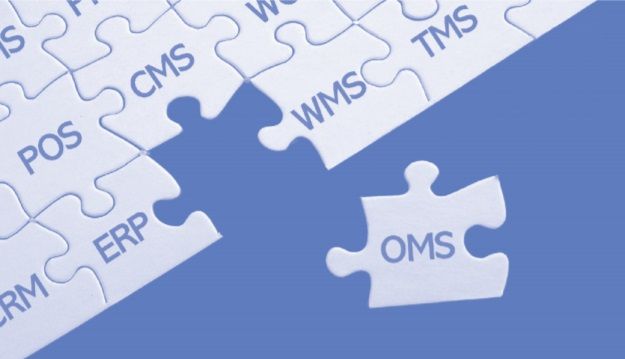Adopting an OMS can seem complex and expensive at first for decision makers in retail, but good practices have emerged to make it easy and effective. What are these good practices? Manhattan Associates’ Emily and Yann share their vision.
According to the annual 2019 study ‘The State Of Retailing Online’ by Forrester 53% of retailers plan to invest in an Order Management System (OMS). At first glance, it can be a complex case for decision makers. The adoption of an OMS has proven impacts on sales figures, customer retention and operational efficiency, but can be a potential disrupter for IT organisations because it is a system at the heart of everything. Fortunately, it is possible to obtain the benefits of an OMS while minimising the impact when executed with the right mindset and an understanding of the common pitfalls to avoid.
Agility: an imperative for success
Organisations that are successful in their OMS deployment have a few agile factors in common:
- Visionary business leaders that rightly acknowledge incremental scope additions and a solution that allows agility over time is the best approach.
- A strong foundation with defined fundamentals such as understanding if markets have access to inventory from other regions or brands.
- Keep milestones of successes close to keep the project teams and stakeholders engaged over time.
- Early creation of internal cross-functional OMS specialists with skills from digital, supply chain, retail, and finance teams.
- Select a configurable OMS solution with a rich catalogue of APIs.
- Utilising ‘OMS Champions’ and APIs for incremental configuration and integrations, which lowers the solution’s total cost of ownership (TCO).
- Accepting an imperfect solution to quickly benefit from added capabilities of a standard packaged OMS.
- Piloting features to empower operational users. For example, store users trying different devices for the store application.
Willingness to boldly change plans when necessary - for example during the COVID-19 crisis - is another noteworthy example of agility in successful deployments.
Not a one-size-fits-all solution
Some packaged ‘OMS’ solutions support very basic order routing and have a harder time with multi-shipment orders, multiple selling channels, order modifications, and omnichannel return orchestration.
Some retailers utilise ecommerce applications for direct-to-consumer (DTC) order flows, which becomes limiting for multi-location fulfilment. Similarly, extending an ERP lacks flexible configuration for future possibilities and an in-house OMS takes ages. Brands with an enterprise omnichannel roadmap choose more complete packaged omnichannel OMS platforms because of their scalable cloud technology, large and global customer base in various industries, and continuous innovation cycles that make their platform an asset to long term omnichannel strategy.
Hybrid strategies have emerged to use the robust order promising and orchestration capabilities of a pre-packaged OMS and its extensibility and ‘user exits’ to connect it through APIs with home-grown services. This is typical for integration with 3rd party services, like payment or carrier gateways. Benefits to this strategy include:
- Unifying channels to streamline architecture which reduces its TCO.
- Access to existing connectors with 3rd party services, such as payment platforms like Adyen and Cybersource, and multi-carrier management solutions such as Logistyx, Metapack and ProShip.
- Owning the integration requirements with 3rd party commerce and carriers directly which supports ‘headless’ ecommerce platforms.
In addition: retailers will be able to maintain the ‘secret sauce’ of in-house managed business logic. This is crucial for their distinctiveness in the market.
 What are the four most common clichés on OMS architecture? And how can we overcome them?
What are the four most common clichés on OMS architecture? And how can we overcome them?
Cliché #1: An OMS must always integrate directly with the WMS The ERP and warehouse management system (WMS) connection can be maintained by using the ERP as the middleman, placing OMS between the selling channels and the ERP. This can be a tactic for accelerating initial deployments and connecting the WMS to the OMS when the opportunity arises, for example, as part of a WMS or ERP upgrade.
Cliché #2: An OMS needs to process orders from all channels It is common to introduce an OMS to optimise only one channel, for example DTC or store replenishment order flows, while other channels continue to be processed by the legacy system. For this purpose, an OMS has options to enable a physically mutualised warehouse stock, while visibly providing ‘buckets’ of stock per selling channels. Options include inventory segmentation per selling channel or simple allocation pass-through for certain channels.
Cliché #3: Batchcontrolled POS technology disqualifies store inventory for omnichannel OMS are quite adaptive and expose a large catalogue of APIs to facilitate the synchronisation of store inventory positions, supporting anything from daily full stock snapshots, to the individual item level incremental events, in ‘delta’ or ‘replace’ mode. Additionally, configuration can be added to ‘protect’ inventory to overcome the risk of intermittent inaccuracy.
Cliché #4: An OMS cannot be introduced without a redesign of the online user experience Adding ship-from-store improves the online customer experience by reducing out-of-stock situations and potentially enabling quicker deliveries, while causing no major impacts on the design of the site. The OMS simply replaces the system that takes responsibility for publishing quantities by still showing one aggregated stock figure with the ecommerce warehouse stock now augmented with the store stock. When the retailer wants to enable the selection of a store for a pickup service, some new UX design could be required.
















Reacties 0